Abstract
1. The parameters of presynaptic inhibition of the Ia spindle afferents from soleus muscle by vibration have been investigated. The inhibitory effects increase with the amplitude of vibration, but decrease when the vibration frequency is increased.
2. The monosynaptic reflex threshold of twenty-one single soleus motor units activated in the H (Hoffmann) reflex by a single electrical stimulus to the posterior tibial nerve was estimated quantitatively and expressed in relation to the size of the simultaneously recorded H reflex.
3. A parametric study of the effects of various Achilles tendon vibrations on the reflex threshold of the single soleus motor units indicated that their order of derecruitment is concordant with their rank order for activation in the phasic reflexes of the soleus. The last recruited motoneurones are the most susceptible to being silenced by steady vibration.
4. Muscle vibration progressively recruits single motor units according to the motoneurone size principle through polysynaptic proprioceptive pathways. However the presynaptic inhibition of Ia spindle afferents simultaneously induced by the vibration works in reverse on the same rank order of motoneurones of the soleus spinal pool, thereby limiting the polysynaptic recruitment of units in the tonic vibration reflex while depressing the autogenic phasic proprioceptive reflexes. These mechanisms elucidate the so-called vibration paradox and extend the size principle of Henneman to presynaptic inhibitory effects.
Full text
PDF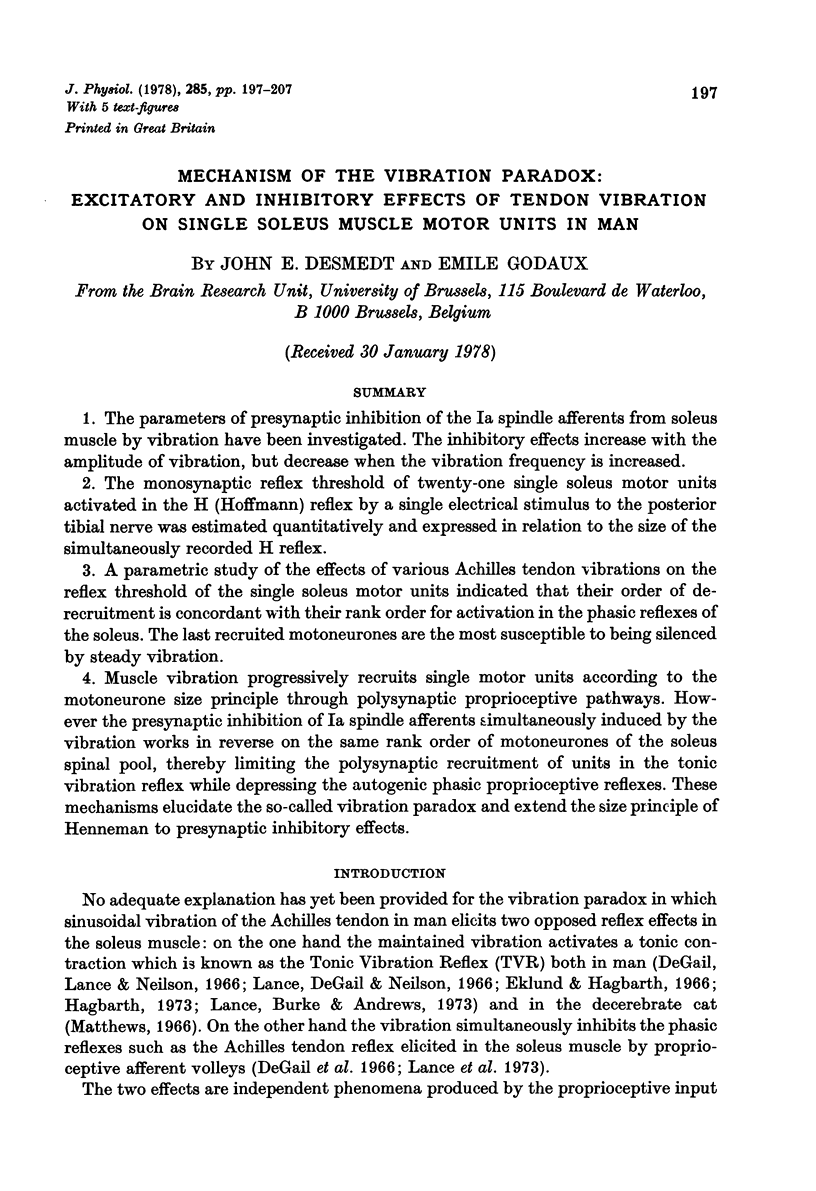

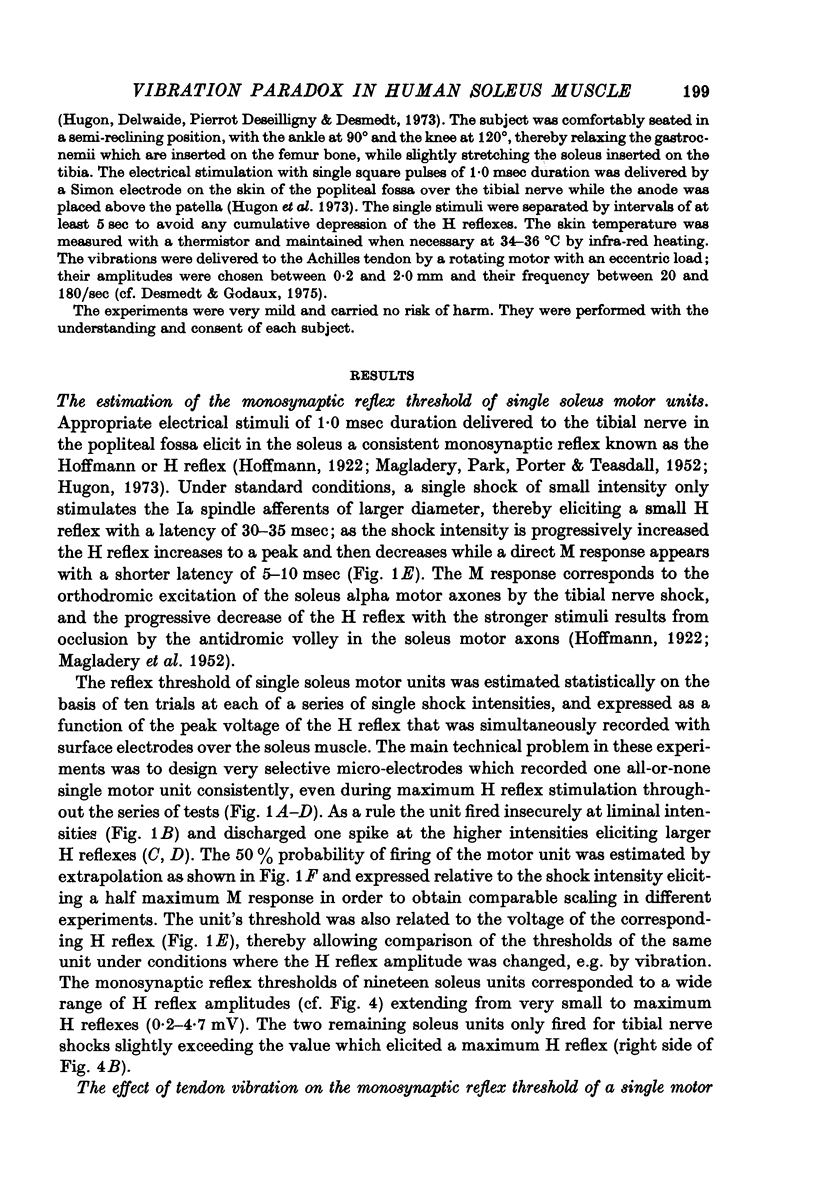
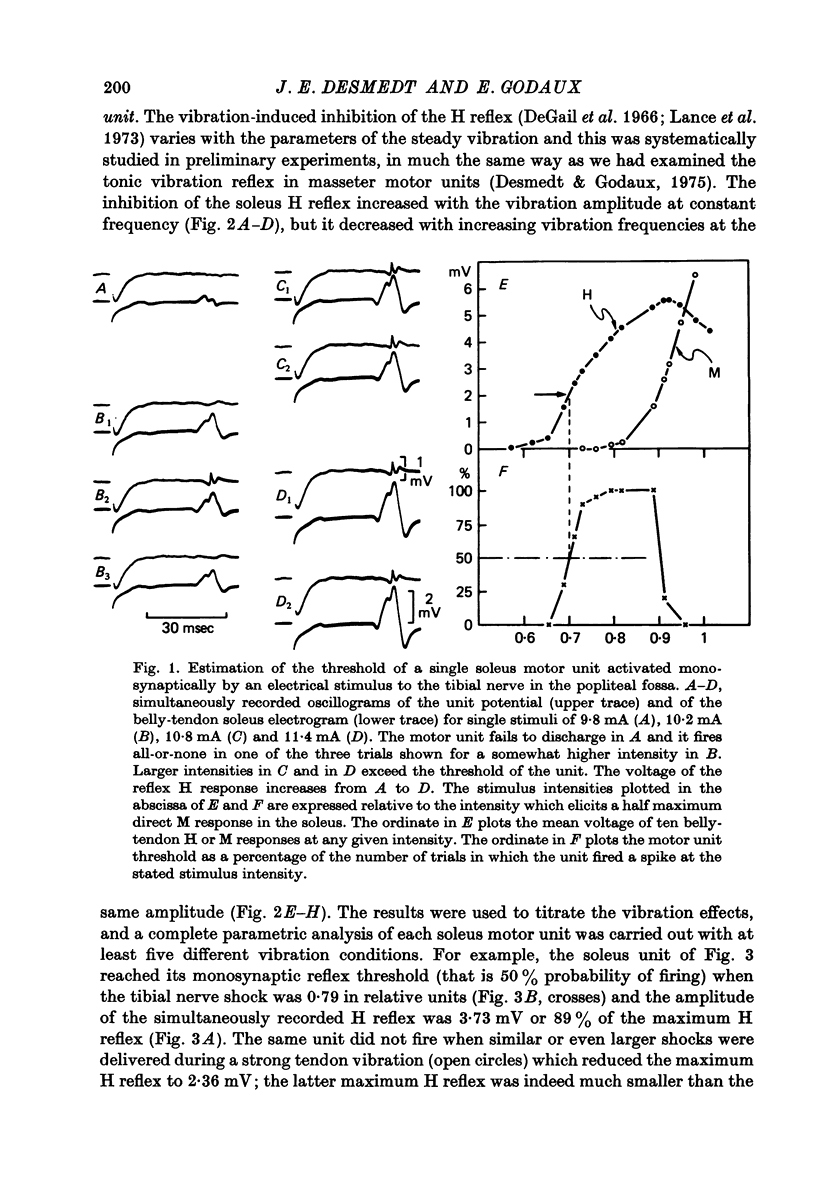
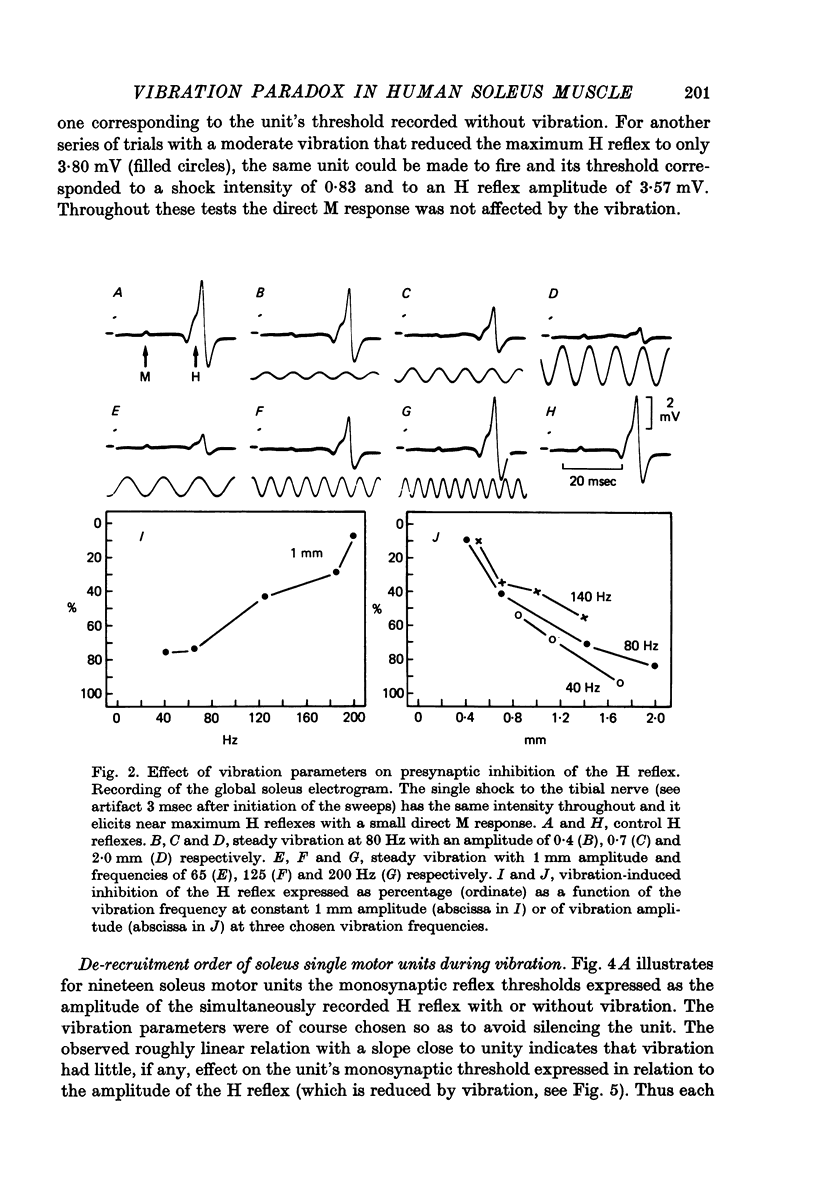
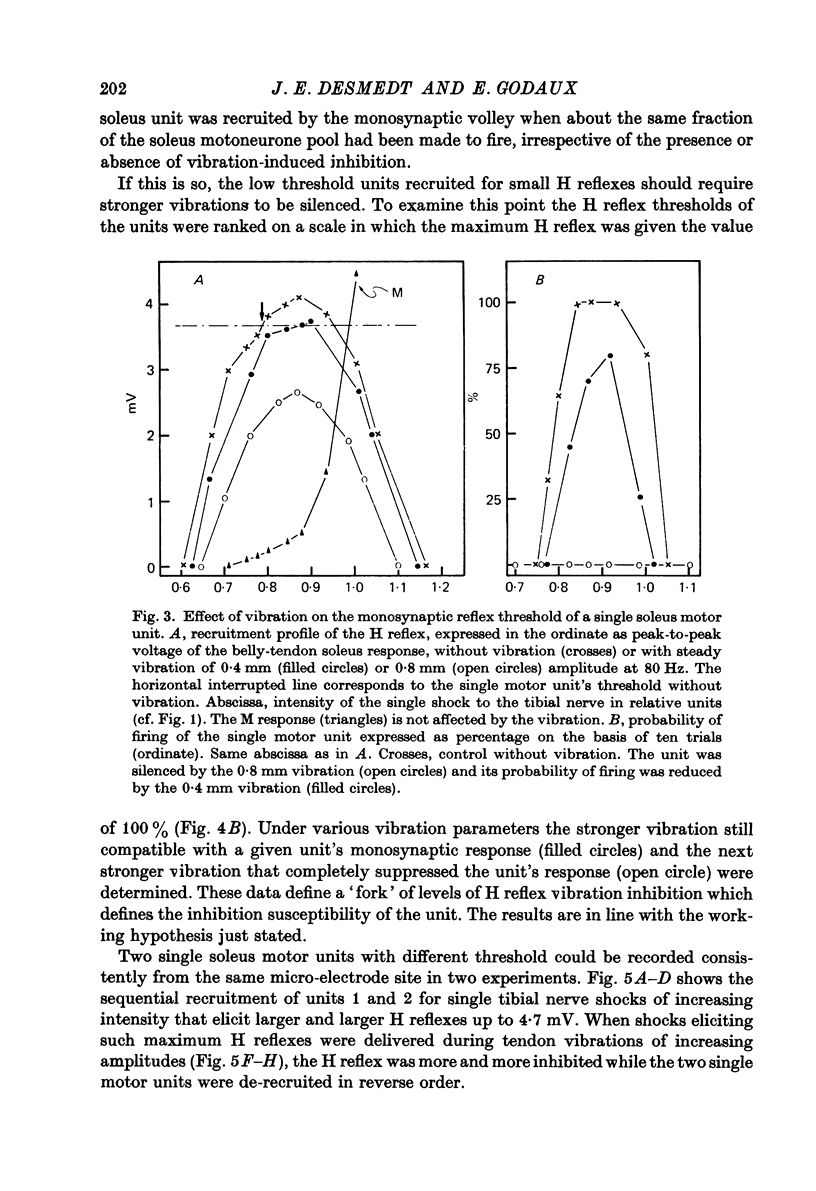

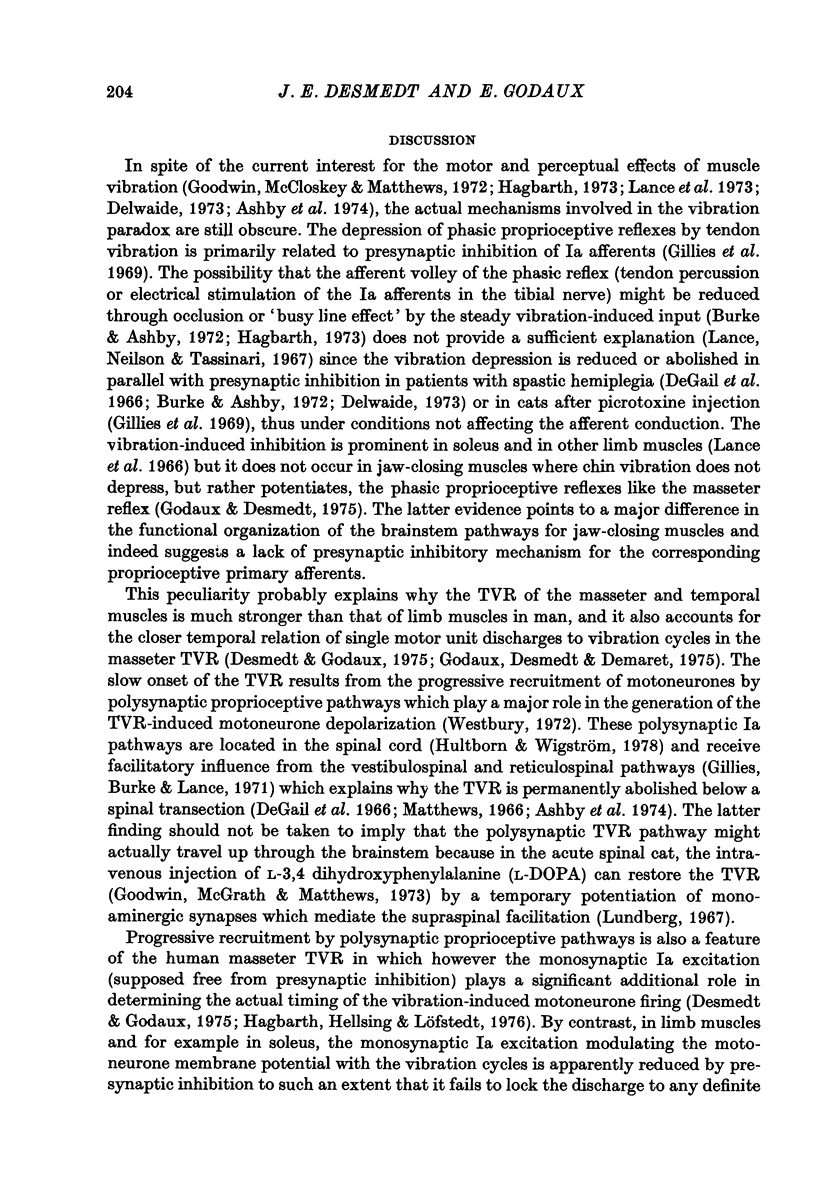
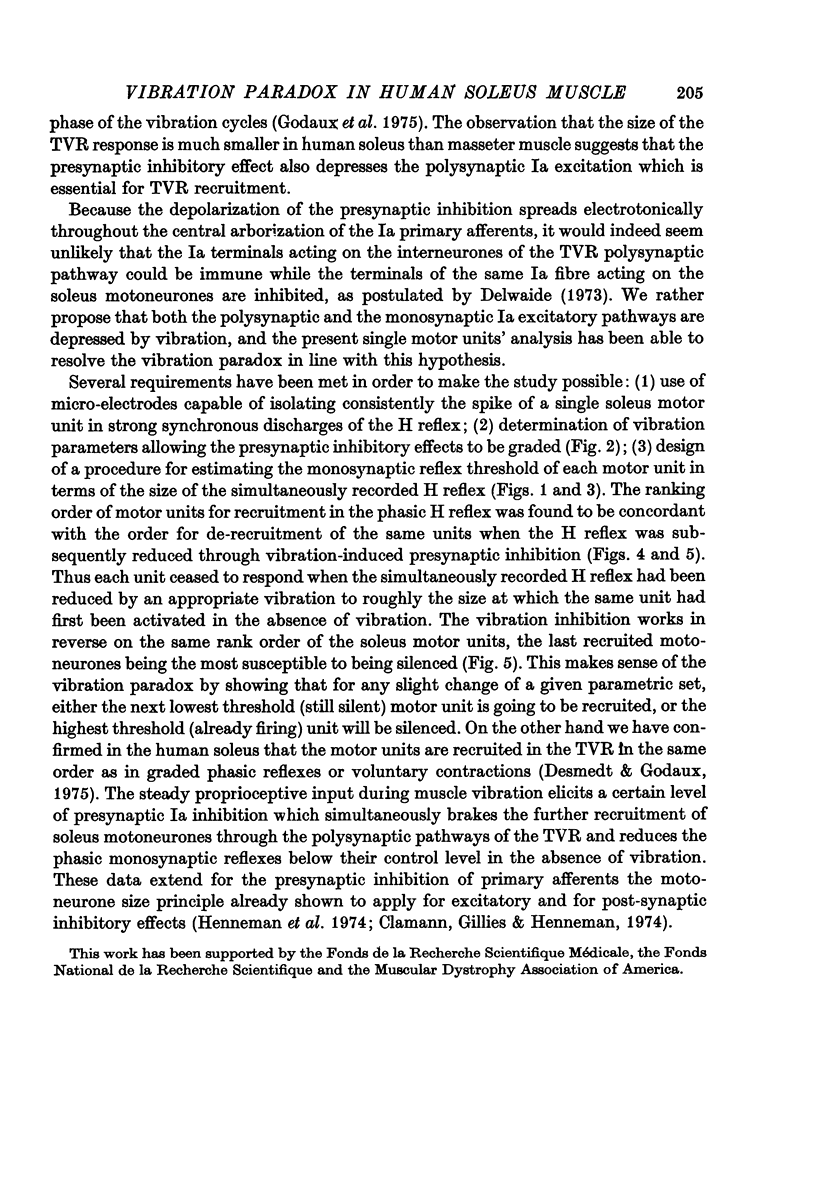

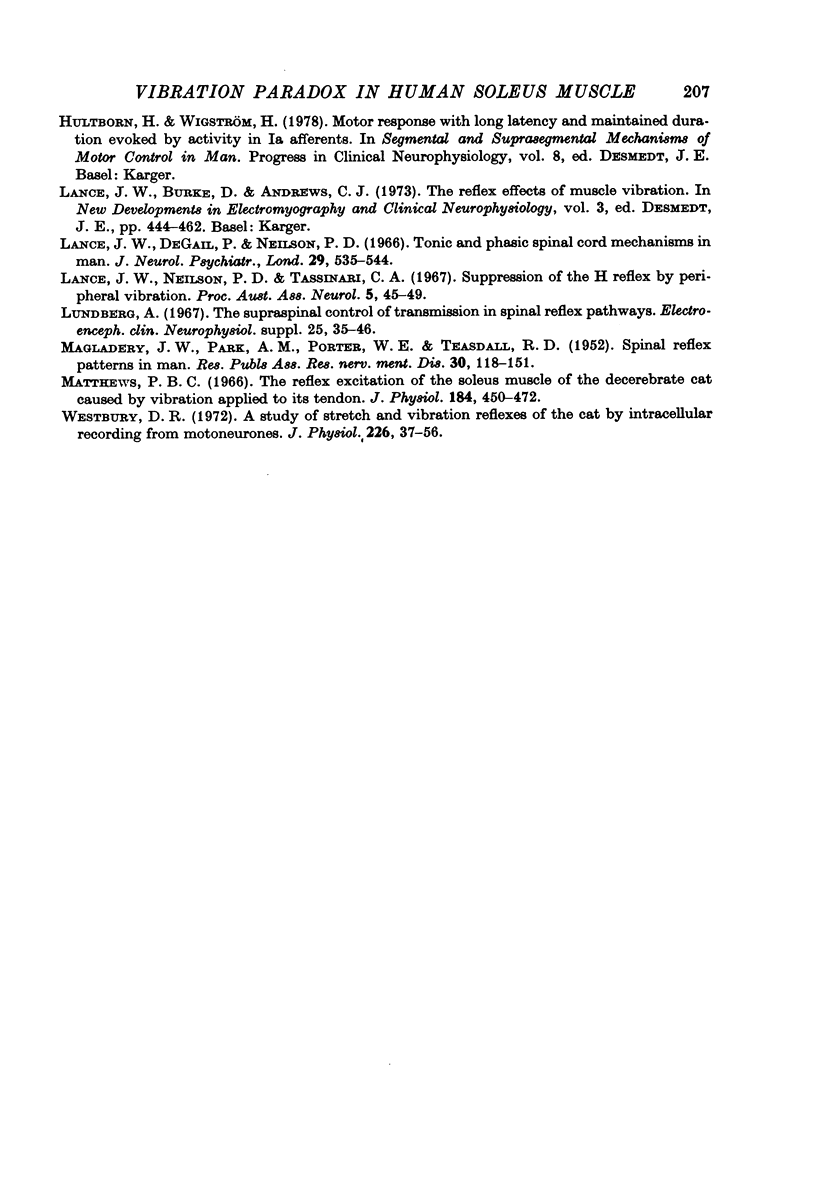
Selected References
These references are in PubMed. This may not be the complete list of references from this article.
- Ashworth B., Grimby L., Kugelberg E. Comparison of voluntary and reflex activation of motor units. Functional organization of motor neurones. J Neurol Neurosurg Psychiatry. 1967 Apr;30(2):91–98. doi: 10.1136/jnnp.30.2.91. [DOI] [PMC free article] [PubMed] [Google Scholar]
- BIANCONI R., van der MEULEN J. The response to vibration of the end organs of mammalian muscle spindles. J Neurophysiol. 1963 Jan;26:177–190. doi: 10.1152/jn.1963.26.1.177. [DOI] [PubMed] [Google Scholar]
- Barnes C. D., Pompeiano O. Presynaptic inhibition of extensor monosynaptic reflex by La afferents from flexors. Brain Res. 1970 Mar 3;18(2):380–383. doi: 10.1016/0006-8993(70)90340-9. [DOI] [PubMed] [Google Scholar]
- Burke D., Ashby P. Are spinal "presynaptic" inhibitory mechanisms suppressed in spasticity? J Neurol Sci. 1972 Mar;15(3):321–326. doi: 10.1016/0022-510x(72)90073-1. [DOI] [PubMed] [Google Scholar]
- Burke D., Hagbarth K. E., Löfstedt L., Wallin B. G. The responses of human muscle spindle endings to vibration of non-contracting muscles. J Physiol. 1976 Oct;261(3):673–693. doi: 10.1113/jphysiol.1976.sp011580. [DOI] [PMC free article] [PubMed] [Google Scholar]
- Clamann H. P., Gillies J. D., Henneman E. Effects of inhibitory inputs on critical firing level and rank order of motoneurons. J Neurophysiol. 1974 Nov;37(6):1350–1360. doi: 10.1152/jn.1974.37.6.1350. [DOI] [PubMed] [Google Scholar]
- De Gail P., Lance J. W., Neilson P. D. Differential effects on tonic and phasic reflex mechanisms produced by vibration of muscles in man. J Neurol Neurosurg Psychiatry. 1966 Feb;29(1):1–11. doi: 10.1136/jnnp.29.1.1. [DOI] [PMC free article] [PubMed] [Google Scholar]
- Desmedt J. E., Godaux E. Ballistic contractions in man: characteristic recruitment pattern of single motor units of the tibialis anterior muscle. J Physiol. 1977 Jan;264(3):673–693. doi: 10.1113/jphysiol.1977.sp011689. [DOI] [PMC free article] [PubMed] [Google Scholar]
- Desmedt J. E., Godaux E. Vibration-induced discharge patterns of single motor units in the masseter muscle in man. J Physiol. 1975 Dec;253(2):429–442. doi: 10.1113/jphysiol.1975.sp011198. [DOI] [PMC free article] [PubMed] [Google Scholar]
- Eklund G., Hagbarth K. E. Normal variability of tonic vibration reflexes in man. Exp Neurol. 1966 Sep;16(1):80–92. doi: 10.1016/0014-4886(66)90088-4. [DOI] [PubMed] [Google Scholar]
- Gillies J. D., Burke D. J., Lance J. W. Tonic vibration reflex in the cat. J Neurophysiol. 1971 Mar;34(2):252–262. doi: 10.1152/jn.1971.34.2.252. [DOI] [PubMed] [Google Scholar]
- Godaux E., Desmedt J. E., Demaret P. Vibration of human limb muscles: the alleged phase-locking of motor unit spikes. Brain Res. 1975 Dec 12;100(1):175–177. doi: 10.1016/0006-8993(75)90255-3. [DOI] [PubMed] [Google Scholar]
- Godaux E., Desmedt J. E. Human masseter muscle: H- and tendon reflexes. Their paradoxical potentiation by muscle vibration. Arch Neurol. 1975 Apr;32(4):229–234. doi: 10.1001/archneur.1975.00490460045005. [DOI] [PubMed] [Google Scholar]
- Goodwin G. M., McCloskey D. I., Matthews P. B. The contribution of muscle afferents to kinaesthesia shown by vibration induced illusions of movement and by the effects of paralysing joint afferents. Brain. 1972;95(4):705–748. doi: 10.1093/brain/95.4.705. [DOI] [PubMed] [Google Scholar]
- Goodwin G. M., McGrath G. J., Matthews P. B. The tonic vibration reflex seen in the acute spinal cat after treatment with DOPA. Brain Res. 1973 Jan 30;49(2):463–466. doi: 10.1016/0006-8993(73)90443-5. [DOI] [PubMed] [Google Scholar]
- HENNEMAN E., SOMJEN G., CARPENTER D. O. FUNCTIONAL SIGNIFICANCE OF CELL SIZE IN SPINAL MOTONEURONS. J Neurophysiol. 1965 May;28:560–580. doi: 10.1152/jn.1965.28.3.560. [DOI] [PubMed] [Google Scholar]
- Hagbarth K. E., Hellsing G., Löfstedt L. TVR and vibration-induced timing of motor impulses in the human jaw elevator muscles. J Neurol Neurosurg Psychiatry. 1976 Aug;39(8):719–728. doi: 10.1136/jnnp.39.8.719. [DOI] [PMC free article] [PubMed] [Google Scholar]
- Henneman E., Clamann H. P., Gillies J. D., Skinner R. D. Rank order of motoneurons within a pool: law of combination. J Neurophysiol. 1974 Nov;37(6):1338–1349. doi: 10.1152/jn.1974.37.6.1338. [DOI] [PubMed] [Google Scholar]
- Lance J. W., Neilson P. D., Tassinari C. A. Suppression of the H reflex by peripheral vibration. Proc Aust Assoc Neurol. 1968;5(1):45–49. [PubMed] [Google Scholar]
- Lundberg A. The supraspinal control of transmission in spinal reflex pathways. Electroencephalogr Clin Neurophysiol. 1967;(Suppl):35–46. [PubMed] [Google Scholar]
- MAGLADERY J. W., PARK A. M., PORTER W. E., TEASDALL R. D. Spinal reflex patterns in man. Res Publ Assoc Res Nerv Ment Dis. 1952;30:118–151. [PubMed] [Google Scholar]
- Matthews P. B. The reflex excitation of the soleus muscle of the decerebrate cat caused by vibbration applied to its tendon. J Physiol. 1966 May;184(2):450–472. doi: 10.1113/jphysiol.1966.sp007926. [DOI] [PMC free article] [PubMed] [Google Scholar]


